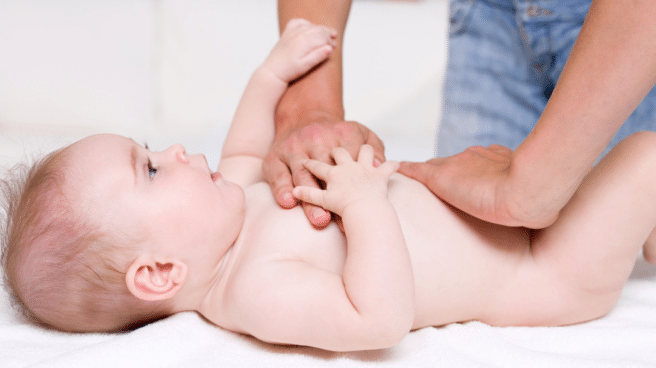

Respiratory infections in children, especially younger children, are often a burden. Sometimes they haven’t finished one and already have a new one. They drag on coughing and excess mucus for weeks and can be very heavy day after day. In many of these cases, respiratory physiotherapy can be of great help. explains it Cecilia Colin, physiotherapist at Quirónsalud University Hospital of Madrid.
The indications are very varied, but the most common are usually bronchopulmonary obstruction or diseases with a large mucus compartment, such as bronchiolitis, so common in children, pneumonia, recurrent infections or superinfections. also in children who are unable to eliminate excess secretion on their ownas well as in neuromuscular diseases or cases of cystic fibrosis.
“Many times we act when children are already in the hypersecretory phase because they usually have difficulty removing this excess secretion on their own. These changes in the production and flow of secretions can occur with viral diseases such as bronchiolitis, ”the specialist says.
more efficient breathing
In other pathologies, the physiotherapist seeks to re-educate the breath, improve the correct function or expand the lung. In these cases, physiotherapy can help children with chest constriction (for example, with severe scoliosis), after heart surgery, with inflammatory diseases such as asthma or emphysema.
This treatment “accelerates the healing process and prevents patients from progressing into a chronic form or sequelae.”
Cecilia Colin, physical therapist
Respiratory physiotherapy can unblock, drain the lung, expand or open obstructed areas, and improve or correct respiratory mechanics, and restore or accommodate the lungs for exercise. “Better breathing speeds up the healing process. It prevents patients from becoming chronic, superinfected or developing complications,” adds a specialist from the Quirónsalud University Hospital of Madrid.
Clinical changes in children are verified directly by constants (improvement in respiratory rate, saturation), radiographs, or a decrease in assisted ventilation. “After one session, we already see clear improvements. This is another tool for the treatment and monitoring of patients with respiratory diseases, necessary to restore proper breathing function,” insists the physiotherapist.
Very helpful for babies
Age is not a limiting factor in respiratory physiotherapy. It can be used from the neonatal stage on very premature babies, even older children or adults. “The physical therapists in hospitals come from incubators, we are part of the intensive care and neonatology team,” says Colin, before emphasizing that methods should always be adapted to the age of the patient.
It is important that physiotherapists make a good assessment of the visual examination and careful auscultation of children. In hospitals, this assessment goes hand in hand with pediatricians, with whom physiotherapists are in direct contact. “The pediatrician is the one who diagnoses the child and indicates whether they can benefit from respiratory physiotherapy methods. Our interventions are sometimes not shown. You need to know at what stage of the disease the child will benefit from our work,” explains specialist Quirónsalud.
There are scales that indicate when they may or may not act based on breathing and pulse rate, oxygen saturation, breathing patterns, or signs of respiratory fatigue. When a child already has significant work of breathing and cannot breathe adequately, external signs such as retraction of the breath (shadow between the ribs when breathing) or paradoxical breathing (instead of expanding the intestine, it is tucked) appear.
How is it done?
Respiratory physiotherapy is usually carried out using manual methods, through light pressure in time with the child’s breathing. To aid drainage, the physiotherapist “should use his knowledge of respiratory mechanics and influence it by selecting pressure type, volume, and flow. These are manual or instrumental methods that separate and displace selections. Is at the base of the lungsin the so-called deep lung regions, where respiratory physiotherapy techniques can be more beneficial,” says Cecilia Colin.
Sometimes therapy requires tools, such as mechanical vibrations, to thin the mucus and facilitate its movement or stimulate the movement of the cilia; He breathe powerfully, an apparatus for strengthening the inspiratory muscles; A flutterto promote bronchial drainage, or help with cough or cough to mimic a cough. “All exercises are performed without fatigue, and constant assessment of the patient’s condition is important,” adds Colin.
Likewise, aggressive methods or methods without scientific validity, such as clap (empty pats on the child’s back) or postural drainage. “He technical rigor and correct continuous evaluation they are the key to the correct selection and application of physiotherapy techniques,” he assures.
Source: El Independiente